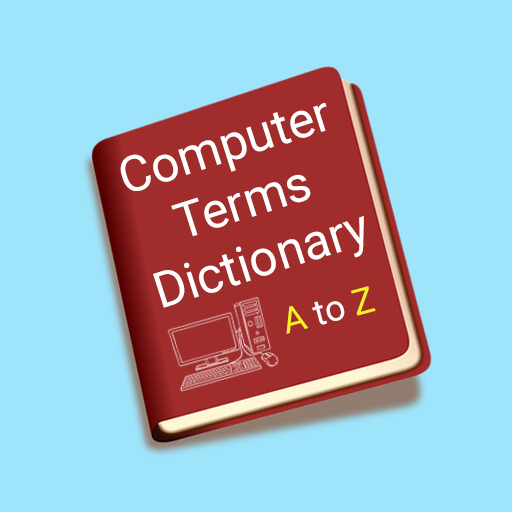Navigating the ever-evolving landscape of technology can feel overwhelming, especially with the constant influx of new computer terms. Understanding these terms is crucial, whether you’re a seasoned programmer or a curious beginner. This comprehensive guide aims to demystify the digital world, providing clear definitions and explanations for a wide range of essential computer terms.
As the website giaithichtengoi.com aptly states (in its own words, though translated for context), “Understanding the language of technology is key to unlocking its potential,” and that’s precisely what we aim to help you achieve here.
Fundamental Concepts

Hardware: The physical components of a computer system, including the central processing unit (CPU), memory (RAM), hard drive, keyboard, monitor, and other peripherals.
Software: The programs and applications that run on a computer, instructing the hardware what to do. Examples include operating systems, word processors, and web browsers.
Operating System (OS): The foundational software that manages all hardware and software resources on a computer. Popular OS examples include Windows, macOS, and Linux.
Central Processing Unit (CPU): The “brain” of the computer, responsible for executing instructions from software. Also known as the processor or microprocessor.
Random Access Memory (RAM): Short-term memory that stores data currently being used by the computer. Data in RAM is lost when the computer is turned off.
Hard Drive (HDD) or Solid-State Drive (SSD): Long-term storage devices that hold data even when the computer is off. HDDs use spinning platters, while SSDs use flash memory for faster access.
Input Devices: Devices used to enter data into a computer, such as keyboards, mice, touchscreens, and scanners.
Output Devices: Devices used to display or output data from a computer, such as monitors, printers, and speakers.
Network: A collection of interconnected computers and devices that can communicate and share data.
Internet: A global network of interconnected computer networks.
World Wide Web (WWW): A system of interlinked hypertext documents accessed via the internet.
Website: A collection of web pages accessible via a web address (URL).
Web Browser: Software used to access and view websites, such as Chrome, Firefox, and Safari.
Search Engine: A website that allows users to search for information on the internet, such as Google, Bing, and DuckDuckGo.
Data and File Management
File: A collection of data stored under a specific name.
Folder (or Directory): A container used to organize files and other folders.
File Extension: A suffix added to a filename that indicates the file type (e.g., .docx, .pdf, .jpg).
File System: The method a computer uses to organize and manage files and folders on a storage device.
Data Compression: Reducing the size of a file to save storage space or reduce transmission time.
Backup: Creating a copy of data to protect against loss or damage.
Cloud Storage: Storing data on remote servers accessible via the internet.
Programming and Software Development
Programming Language: A formal language used to write instructions for a computer.
Programming Paradigm: A fundamental style of computer programming (e.g., object-oriented programming, procedural programming).
Algorithm: A step-by-step procedure for solving a problem.
Source Code: The human-readable instructions written in a programming language.
Compiler/Interpreter: Software that translates source code into machine-readable instructions.
Debugging: The process of identifying and fixing errors in source code.
Software Development Life Cycle (SDLC): A structured process for developing software applications.
Application Programming Interface (API): A set of rules and specifications that allow software programs to communicate with each other.
Software Library: A collection of pre-written code that can be reused in different programs.
Software Framework: A comprehensive platform that provides tools and libraries for building software applications.
Networking and Internet Concepts
IP Address: A unique numerical identifier assigned to each device on a network.
Domain Name: A human-readable name for a website or server (e.g., google.com).
Domain Name System (DNS): A system that translates domain names into IP addresses.
URL (Uniform Resource Locator): A web address that specifies the location of a web page.
Protocol: A set of rules governing data communication (e.g., HTTP, HTTPS, FTP).
Bandwidth: The amount of data that can be transmitted over a network in a given amount of time.
Router: A device that forwards data packets between networks.
Firewall: A system that controls network traffic to prevent unauthorized access.
Network Security: Measures taken to protect computer networks from unauthorized access and threats.
Cybersecurity: The practice of protecting computer systems and networks from theft or damage.
Intranet: A private network accessible only to authorized users within an organization.
Extranet: A private network that allows controlled access to authorized external users.
Data and Databases
Database: An organized collection of structured information or data, typically stored electronically in a computer system.
Database Management System (DBMS): Software used to create, manage, and access databases.
Structured Query Language (SQL): A language used to interact with relational databases.
Relational Database: A database that organizes data into tables with rows and columns.
NoSQL Database: A database that does not use the relational model.
Data Mining: The process of discovering patterns and insights from large datasets.
Data Warehousing: The process of storing and managing large amounts of data for analysis.
Big Data: Extremely large and complex datasets that require specialized tools and techniques for analysis.
Data Analytics: The process of examining raw data to draw conclusions about the information it contains.
Computer Security
Virus: A malicious program that can replicate itself and spread to other computers.
Malware: Malicious software designed to damage or disable a computer system.
Phishing: A deceptive attempt to obtain sensitive information such as usernames, passwords, and credit card details.
Firewall: A system that controls network traffic to prevent unauthorized access.
Antivirus Software: Software designed to detect and remove viruses and other malware.
Encryption: Converting data into an unreadable format to protect it from unauthorized access.
Password Manager: Software that securely stores and manages passwords.
Two-Factor Authentication (2FA): A security measure that requires two forms of authentication to verify a user’s identity.
Data Breach: The unauthorized access and disclosure of sensitive information.
Cybersecurity Threat: Any potential danger to a computer system or network.





